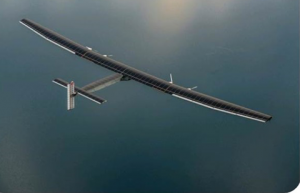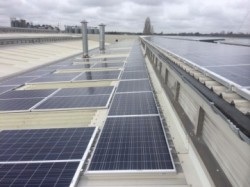What is EMR?
EMR stands for Energy Market Reform. It is a policy created by the government to incentivise investment in low carbon technologies such as renewable energy.
It is a levy applied to consumers which has been designed to encourage users to reduce their consumption or make a contribution to meet future demands.
EMR will be implemented by way of additional charges onto your electricity bills to meet the £100BN of capital investment the UK require to meet future projected energy demand.
Albeit a gradual ascent, the next year or two is expected to see this ‘tax on consumption’ rise sharply. The more you consume, the more you will be charged.
Consumers could see as much as a 42% increase in energy costs as a result of EMR and other related charges.
Provide or Reduce?
The thinking behind this reform is to charge electricity customers to either:
- PROVIDE funds to the 100BN investment pot needed to meet the infrastructure demands
- Encourage them to REDUCE their carbon consumption and use secure future-proof technologies
As consumers, we have two options –
Provide: In addition to our energy costs, pay a consumption based levy to fill the coffers pot.
Reduce: Make changes to our consumption. Install technologies to future-proof our businesses and homes. Renewable energy solutions to meet our requirements will help us to avoid high EMR charges, reduce our energy bills and grid consumption.
What’s in it for me?
By installing a renewable technology to generate your own electricity you will become a ‘Generator’ and you may also be able to obtain CfD (Contract for Development) payment alongside a reduced ERM contribution.
CfDs are payments made to the Generator by a Low Carbon Contracts Company (LCCC) for renewable electricity sent back to the network for use at times of peak demand or shortage.
The cost of the CfD payments to generators will incidentally be met through the EMR related charges on consumer’s bills.
If you remain dependent on the grid, and as a result of EMR you will effectively be funding consumers who are renewable, paying less EMR and being paid CfD’s!
Call us today on 01245 227100 or contact us and we will help you to design a system to suit your needs and combat avoidable charges.
Posted: February 17th, 2017 by
| Filed under Commercial Solar, Energy Efficiency, Renewable Energy, Solar PV
The recent sunny weather and the surge of Solar PV installations in the first half of the year mean that as much as 15% of the UKs energy has been coming from Solar PV. Read the rest of this entry »
Posted: July 21st, 2015 by Browns
| Filed under Commercial Solar, Feed in Tariff (FiT), Green Deal, Renewable Energy, Renewable Energy Source, Solar PV
Cardiff University has designed and constructed the sort of house recently described by chancellor George Osborne as “impossible”. The house actually exceeds previously scrapped standards that were considered “too high” by not only being carbon neutral but actually carbon negative. Read the rest of this entry »
Posted: July 17th, 2015 by Browns
| Filed under Green Deal, Renewable Energy, Renewable Energy Source, Solar PV
With the rapid growth of Solar PV installations in the UK, grid capacity in some areas is coming under scrutiny. Some of the out-dated and older electricity networks are beginning to struggle with the power flow back to the grid from the UK’s many Solar PV plants. District Network Operators (DNOs) are now imposing export limitations on new Solar PV installations, which prevent potential generators from connecting the size of system they want up to the electricity network. Read the rest of this entry »
Posted: July 14th, 2015 by Browns
| Filed under Energy Efficiency, Feed in Tariff (FiT), power, Renewable Energy, Renewable Energy Incentives, Solar PV, Uncategorized
The worlds first solar powered plane “Solar Impulse 2” has landed in Hawaii, completing whats considered to be the most dangerous leg of its journey.

The Solar Impulse 2 has been circumnavigating the globe this year
Read the rest of this entry »
Posted: July 13th, 2015 by Browns
| Filed under power, Renewable Energy, Solar PV, Uncategorized
July 1st saw another small reduction in generation tariff rates paid for new solar PV installations under the feed in tariff scheme.
As part of a steady reduction as technology moves forward, newer installations will be paid at a lower rate to reflect the lowering costs of equipment and new electricity market costs. Read the rest of this entry »
Posted: July 7th, 2015 by Browns
| Filed under Commercial Solar, Feed in Tariff (FiT), Renewable Energy, Solar PV
Renewable Energy Generation increases by 20%
The amount of electricity generated from renewable energy sources has increased by 20% a new study shows. Read the rest of this entry »
Posted: May 15th, 2015 by Browns
| Filed under DECC, Feed in Tariff (FiT), Renewable Energy, Renewable Energy Source, Solar PV, Uncategorized
With the UK general election around the corner, parties have revealed manifestos relating to renewable energy.
Renewable energy is a hot topic in the UK with thousands of homes and businesses investing in renewable technologies such as Solar PV. Read the rest of this entry »
Posted: April 16th, 2015 by Browns
| Filed under DECC, Energy Efficiency, power, Renewable Energy, Solar PV, Uncategorized
This week the Labour party, as part of their pre election campaign, revealed plans to assist schools in seeking funding for Solar PV. Previously solar for schools was limited due to restrictions on schools borrowing to pursue solar projects. Read the rest of this entry »
Posted: April 10th, 2015 by Browns
| Filed under Feed in Tariff (FiT), Green Deal, Renewable Energy
This week Secretary of State for Communities and Local Government, Eric Pickles, announced that the permitted development rights for Solar PV in the UK would be increased from 50kW to 1 Megawatt, a 2000%

another business maximises roof space through commercial solar
increase.
This a huge boost for Commercial Solar rooftop installations. These changes to the development rights remove another barrier that surrounded installations of less than 1MW. In the past 18 months this sector has proven to be one of the fastest growing and most effective with many businesses across the UK making the most of previously unused space with Solar PV.
The advantages of the governments feed in tariff scheme enable these businesses to receive regular payments for producing energy through their commercial solar PV systems. In addition to these payments, the business can significantly reduce their energy bills as they are producing a portion of their own green electricity on site.
To see how Commercial Solar PV could be the best future investment for your business click here and contact us today.
Posted: March 30th, 2015 by Browns
| Filed under Commercial Solar, Feed in Tariff (FiT), Renewable Energy, Renewable Energy Incentives, Uncategorized





